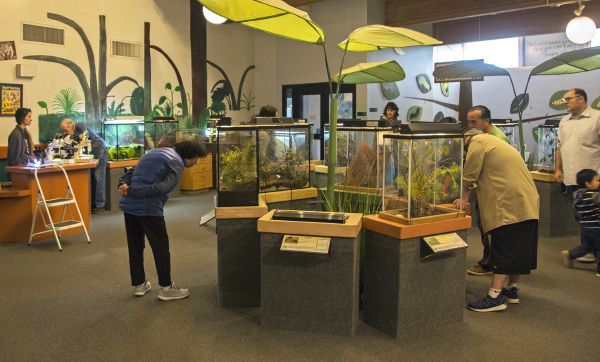Insect Zoo

The Insect Zoo is home to some of the most industrious, fascinating and diverse creatures on the planet, and they all serve unique purposes in their ecosystems.
When it was created as a temporary exhibition in 1979, our Insect Zoo proved so popular that it became a permanent exhibit. In it, you find terrariums filled with a variety of arthropods, from our backyard and afar, including millipedes, centipedes, Madagascar hissing cockroaches, tarantulas, scorpions, velvet ants (actually a type of wasp) and termites to name a few. You’ll be mesmerized watching our busy “bugs” — the harvester ants foraging for food and taking care of their eggs or the organized bees running the working beehive, where free-flying bees enter from outdoors through a tube leading to the indoor hive.
Experiences Galore
Participatory experiences for all ages add to the fun. Young children can play in the sandbox outside, or enjoy insect-themed books, videos, puzzles and puppets. Older kids can get a glimpse into the science of entomology, look at specimens under a microscope, bring home a handout about butterfly gardening and even go to a “post office” to fill out a card encouraging government support for conservation that will be mailed to Washington. They also enjoy chatting with Zoo staff, especially hearing behind-the-scenes stories such as how we care for our giant thorny phasmids (walkingsticks) — mimicking their natural conditions by misting them twice a day, collecting and incubating their eggs (thought to be the largest of all insect eggs) for up to 18 months, rearing the young for another year until they are large enough to go on display, and going out every day, sometimes as far as Golden Gate Park, to collect browse for them to eat.
You might find Insect Zoo staff bring out the insects for an Incredible Insects in Action demonstration, where you’ll see amazing insects and other arthropods up-close during this fascinating demonstration. See Feedings and Presentations for the latest times.
All these offerings teach the importance of biodiversity in nature and the significance of preserving entire ecosystems.
